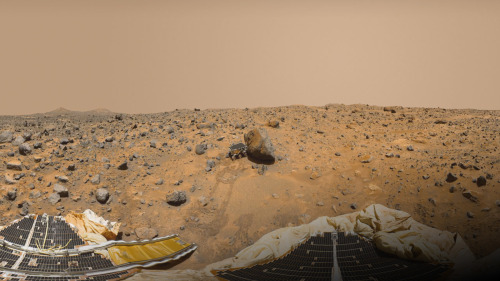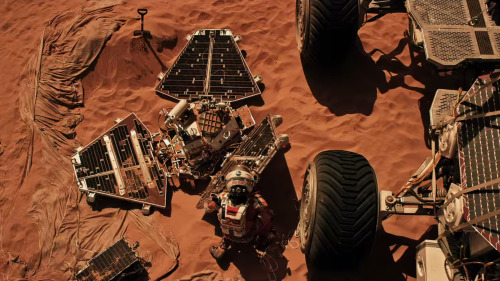Rowing Robot Powers Itself By Gulping Dirty Water

Rowing robot powers itself by gulping dirty water
More Posts from Curiositytherover and Others

Scientists Find Two Natural Genes in our Cells That Can Combat HIV
During the opening era of the AIDS epidemic, being diagnosed was a death sentence. Thanks to advances in medicine, it isn’t anymore. HIV is no longer a terminal illness; with treatment, an individual with HIV has the exact same life expectancy as someone without the disease.
However, it is still a devastating virus. The treatments have many side effects, and you will need to take the medicine for the rest of your life.
For years, scientists have been trying to find a way to effectively cure HIV/AIDS, but unfortunately, none yet have made that incredible leap. But new breakthroughs come each year, which slowly bring us closer to our goal.
Case in point, last month, researchers from the University of Massachusetts Medical School announced the discovery of proteins that naturally inhibit the human immunodeficiency virus. Surprisingly, they found these proteins in the cells in our immune system’s T cells, which are the cells that HIV attacks (specifically, it attacks CD4 positive T cells, which are white blood cells that are vital to fighting off infection).
Find out more at: http://futurism.com/links/scientists-find-two-natural-genes-in-our-cells-that-can-combat-hiv/
![Magnified Universe [more]](https://64.media.tumblr.com/197c7ee2475a77605a8816687657e418/tumblr_nyjo97H9BI1s819puo1_500.png)
![Magnified Universe [more]](https://64.media.tumblr.com/84d8d8b852eae770892412d1cc8fe292/tumblr_nyjo97H9BI1s819puo2_500.png)
![Magnified Universe [more]](https://64.media.tumblr.com/0c4b9a665058e3836b60f622f1f0609a/tumblr_nyjo97H9BI1s819puo3_500.png)
![Magnified Universe [more]](https://64.media.tumblr.com/de0cd3dc514b3e64e3e88b9de9e0adc9/tumblr_nyjo97H9BI1s819puo4_500.png)
![Magnified Universe [more]](https://64.media.tumblr.com/100047dd8f124eeb1b3f3ee0b21524fc/tumblr_nyjo97H9BI1s819puo5_500.png)
![Magnified Universe [more]](https://64.media.tumblr.com/e69f4879cf17a7a81f7d2b4334aa3873/tumblr_nyjo97H9BI1s819puo6_500.png)
![Magnified Universe [more]](https://64.media.tumblr.com/ec3c6c7c24857c4e2219cf2676953232/tumblr_nyjo97H9BI1s819puo7_500.png)
![Magnified Universe [more]](https://64.media.tumblr.com/1513bc2928b65ad61b12c18ef82b191f/tumblr_nyjo97H9BI1s819puo8_500.png)
![Magnified Universe [more]](https://64.media.tumblr.com/82dd885da9ec482c369820a590febdce/tumblr_nyjo97H9BI1s819puo9_500.png)
![Magnified Universe [more]](https://64.media.tumblr.com/8bc1203743e917491c4989e5afd1fa3b/tumblr_nyjo97H9BI1s819puo10_500.png)
Magnified Universe [more]
Scientists just released a ton of surprising new information about Pluto.
Eight months after the New Horizons spacecraft whizzed past this small planet, scientists have published a whole suite of studies that bring into perspective just how strange and wonderful a place the tiny dwarf planet is.
Pluto’s surface is even more alien than we thought. The dwarf planet’s smooth plains, scarred craters and ice mountains were not what scientists expected to find on something so far out in the outer solar system. Scientists think all that diverse terrain means Pluto has been geologically active for much of its life over the past 4.6 billion years.

Pluto’s atmosphere is still a mystery. Turns out Pluto’s atmosphere is about 70 degrees Fahrenheit colder and much more stable than scientists initially thought.

We finally got a close look at Pluto’s five moons. Scientists think that Pluto and its largest moon Charon once collided. Instead of completely breaking apart, they went into orbit around one another. Now there’s evidence that Pluto’s four smaller moons may have formed from chunks of debris that spilled out of the same collision, according to the new research.

We still only have about half the data that New Horizons collected during its flyby, so Pluto may hold many more mysteries. Read more.
Follow @the-future-now

DJI’s drone safety system has you signing up to fly in some areas

Reviving Chivalry: Small Favors Can Yield Large Returns
Many people hold the door open for strangers. But what do people give in return?
The research is in Frontiers In Psychology. (full open access)


Mars Pathfinder & Sojourner Rover (360 View) Explained
Thanks to new technology, we can take a 360-degree tour of the 1997 Pathfinder mission landing site, including Sojourner, the first Mars rover. Check out this interactive YouTube panorama, and then…
…keep scrolling to find out more about each point of interest, how the Pathfinder mission compares to “The Martian” and NASA’s real Journey to Mars.

Yogi
“Yogi” is a meter-size rock about 5 meters northwest of the Mars Pathfinder lander and the second rock visited by the Sojourner Rover’s alpha proton X-ray spectrometer (APXS) instrument. This mosaic shows super resolution techniques applied to help to address questions about the texture of this rock and what it might tell us about how it came to be.

Twin Peaks
The Twin Peaks are modest-size hills to the southwest of the Mars Pathfinder landing site. They were discovered on the first panoramas taken by the IMP camera on the July 4, 1997, and subsequently identified in Viking Orbiter images taken over 20 years ago. They’re about 30-35 meters tall.

Barnacle Bill
“Barnacle Bill” is a small rock immediately west-northwest of the Mars Pathfinder lander and was the first rock visited by the Sojourner Rover’s alpha proton X-ray spectrometer (APXS) instrument. If you have some old-school red-cyan glasses, put them on and see this pic in eye-popping 3-D.

Rock Garden
The Rock Garden is a cluster of large, angular rocks tilted in a downstream direction from ancient floods on Mars. The rocky surface is comprised of materials washed down from the highlands and deposited in this ancient outflow channel.

MOAR INFO
Pathfinder Lander & Sojourner Rover
Mission Facts [PDF]
Science Results
Rock & Soil Types


This vista was stitched together from many images taken in 1997 by Pathfinder.

Pathfinder and Sojourner figure into Mark Watney’s quest for survival on the Red Planet in the book and movie, “The Martian.” See JPL’s role in making “The Martian” a reality: http://go.nasa.gov/1McRrXw and discover nine real NASA technologies depicted in “The Martian”: http://go.nasa.gov/1QiyUiC.

So what about the real-life “Journey to Mars”? NASA is developing the capabilities needed to send humans to Mars in the 2030s. Discover more at http://nasa.gov/journeytomars and don’t forget to visit me when you make it to the Red Planet. Until then, stay curious and I’ll see you online.

End texts with a period if you want to seem like a jerk









If Our Universe Is So Old and Vast, Then Where Are All the Aliens?
Read more at: http://futurism.com/images/ http://futurism.com/images/if-our-universe-is-so-old-and-vast-then-where-are-all-the-aliens/
How Do You Stay Fit on a Mission to Mars?
This mini exercise device could be the key!
Onboard the International Space Station, astronauts need to work out to maintain their bone density and muscle mass, usually exercising 2 hours every single day. Throughout the week, they exercise on three different pieces of equipment–a bike, a treadmill and the Advanced Restive Exercise Device (ARED).

All these devices are needed to keep an astronaut healthy.
However, deep-space vehicles like our Orion Spacecraft aren’t as roomy as station, so everything — including exercise equipment — needs to be downsized. The Miniature Exercise Device (MED-2) is getting us one step closer to being able to keep astronauts’ bodies healthy on long journeys to the moon, Mars and beyond.

MED-2 is a compact, all-in-one exercise device that we developed and will be launching to the space station Tuesday, March 22. Onboard the station, we’ll see how MED-2 will perform in microgravity and how it will need to be further adapted for our Journey to Mars. However, it’s already pretty well equipped for deep space missions.
So what makes MED-2 so great for deep space travel and our Journey to Mars?
1. It is an all-in-one exercise device, meaning it can do both aerobic and resistive workouts. When we go to Mars, the less equipment we need, the better.

2. It’s incredibly light. The MED-2 weighs only 65 pounds, and every pound counts during space missions.

3. It has 5 - 350 pounds of resistance, despite weighing only 65 pounds. Astronauts don’t all lift the same amount, making the flexibility in MED-2’s “weights” essential.

4. It’s tiny. (Hence its name Miniature Exercise Device.) Not only is MED-2 incredibly light, but it also won’t take up a lot of space on any craft.

5. It powers itself. During an aerobic workout, the device charges, and then that power is used to run the resistive exercises. When traveling to space, it’s good when nothing goes to waste, and now astronauts’ workouts will help power the Journey to Mars.

MED-2 is only one of many devices and experiments flying on Orbital ATK’s Cygnus spacecraft. To find out more about the science on the space station, follow @ISS_Research and @Space_Station on Twitter.
Make sure to follow us on Tumblr for your regular dose of space: http://nasa.tumblr.com

Inhabitat’s Week in Green: Paris climate talks, and more!
-
 thegamejustgotmorefierce reblogged this · 9 years ago
thegamejustgotmorefierce reblogged this · 9 years ago -
 ahpad liked this · 9 years ago
ahpad liked this · 9 years ago -
 s-x-m-b-r-a liked this · 9 years ago
s-x-m-b-r-a liked this · 9 years ago -
 hypnogerm liked this · 9 years ago
hypnogerm liked this · 9 years ago -
 ckeckelove liked this · 9 years ago
ckeckelove liked this · 9 years ago -
 sigvicious liked this · 9 years ago
sigvicious liked this · 9 years ago -
 mastodontic reblogged this · 9 years ago
mastodontic reblogged this · 9 years ago -
 wingzero510 liked this · 9 years ago
wingzero510 liked this · 9 years ago -
 suzuki-katana liked this · 9 years ago
suzuki-katana liked this · 9 years ago -
 curiositytherover reblogged this · 9 years ago
curiositytherover reblogged this · 9 years ago -
 darthlenaplant liked this · 9 years ago
darthlenaplant liked this · 9 years ago -
 utot-atbp liked this · 9 years ago
utot-atbp liked this · 9 years ago -
 engadget reblogged this · 9 years ago
engadget reblogged this · 9 years ago